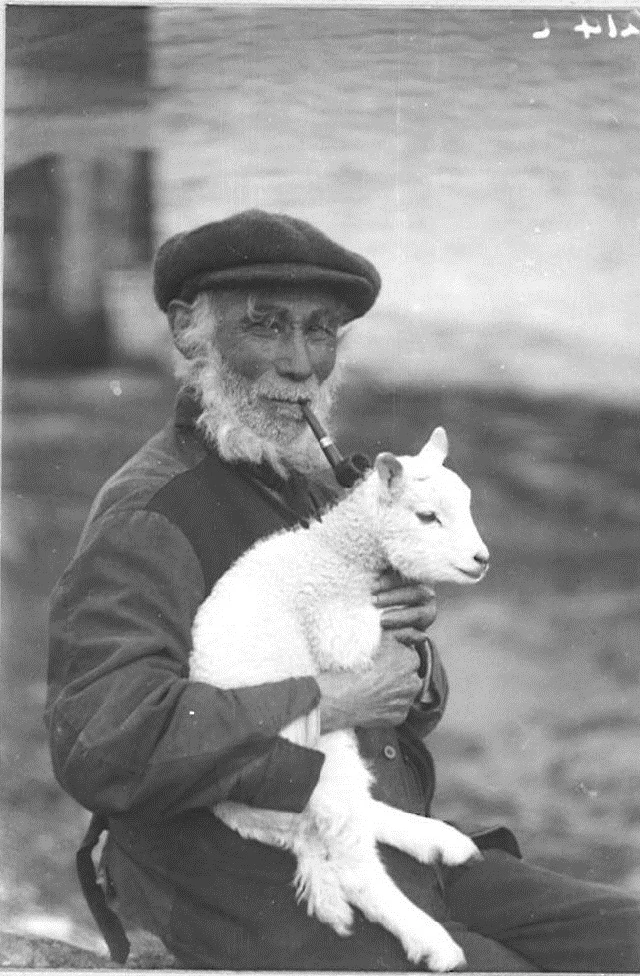Voices from the archive – Remembering Lambing Time
, 20 March 2016
In the early 1970s Museum staff set out to record older and retired farmers describing farming in Wales in the first half of the twentieth century, before the large-scale mechanisation and expansion from the 1950s onwards. The recordings are kept in our Sound Archive.
In April 1977 Earnest Thomas Ruell, then aged 76, was interviewed about sheep farming in Radnorshire, mid-Wales, in the early decades of the twentieth century. Born in 1901, he lived at The Pant farm, Llanfihangel Rhydithon, in the hills north east of Llandrindod Wells. After marrying in 1924 he farmed at Dolyfelin near Knighton for thirty four years.
In this short compilation of selected clips, Thomas Ruell describes lambing time, speaking in the distinctive accent of Radnorshire, one of the most rural Welsh counties, bordering Herefordshire.
Earnest Thomas Ruell - Radnorshire farmer
The flock comprised 120 ewes and 4 or 5 rams. The breed of sheep was the local Kerry Hill, regarded as excellent mothers. Lambing took place outside, the only space available under cover was by emptying the wainhouse (cart shed) during heavy snow. Treatments for illnesses were limited and often based on local remedies. The flock producing a lambing figure of 125% was considered a good outcome. Female lambs grew into ewes and were kept for just over two years then sold, during which time they would have produced lambs themselves.
Large sheds allow lambing to be a lot less dependent upon weather conditions and the seasons, often starting as early as January. Here at Llwyn-yr-eos farm our ewes were all undercover well before lambing even began. Most flocks and farms now have to be considerably larger in order to be viable. Treatments for illnesses have advanced considerably, most of which can be applied by farmers themselves. Some similarities remain between lambing in the 1920s and the 1930s and the present, though, and a great deal of time, care and attention from the farmer are still fundamental elements for successful lambing today.
